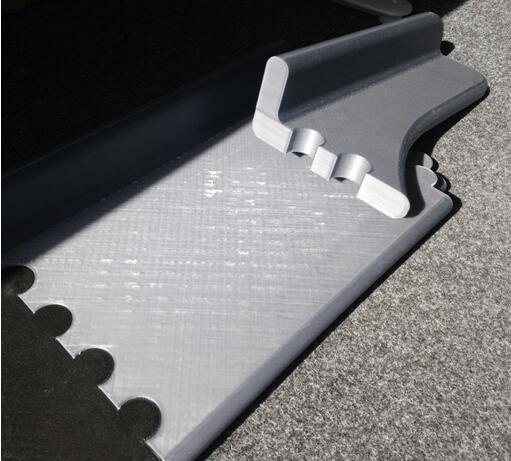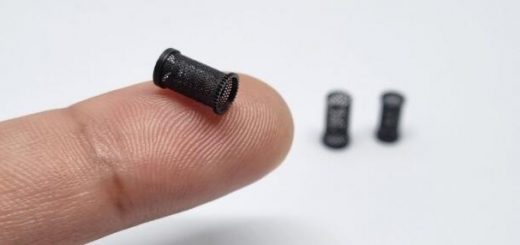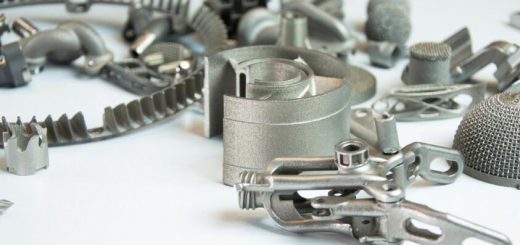Airbus Helicopters manufactures a 3 meter component and reduces development costs with the German RepRapx400
Production using additive manufacturing in the aerospace industry brings many advantages. Airbus Helicopters use their German RepRap x400 3D printer in the development field to ensure deadlines, cost and quality goals. In a recent case, it’s about validating the design of an integral new step. Frank Singer, Head of Department Vehicle System Installation at Airbus Helicopters in Germany GmbH explains: “It happens again and again that a crew member of a helicopter stands outside on the runners during the flight due to operational reasons. Under certain circumstances, also during operation of the rescue winch. The relatively small footprint on the runners could be optimized by using a step.” The challenge of creating a demonstrator for such a step is to make the model easy to assemble and disassemble. With a demonstrator length of almost three meters, a glueing process was out of the question, the model would not have carried its own weight and could not have been disassembled. At the same time, the prototype should be so stable that it can be easily carried around in the assembled state and it can be used at any time for illustrative purposes.

Abbildung 1: Plug connection in puzzle style
In a first step, the nearly three-meter-long model will be subdivided into printable individual parts. Afterwards the individual puzzle plug connections are constructed. Here, a few test prints and adjustments in the print software were needed to define the optimal tolerances of the fit. This puzzle connection with the now evaluated parameters is then transferred to the eight printing parts and printed with the x400.

Abbildung 2: Tail and connector of the step
“In the past, we have had to divide larger prototypes into separate parts because of the print bed size. These were often glued together. However, this was always associated with further processing steps, which we can now save – if the application allows it. The quickly printed parts require no further processing steps or curing time of the adhesive anymore” says Frank Singer. “With this method, we have found an ingenious application for this design, to have a large component quickly and cost-effectively available with the print bed size that is available.” For Airbus Helicopters, the new plug-in connection, for appropriate applications, is an optimal solution because it requires no glue, no screw connection or tools. The plug connection can be used at least 50 times without any signs of wear. The model is much more stable than it would be in a glueing process. It withstands it’s own weight of 3.9 kg without any problems and can be mounted on the helicopter for illustrative purposes without wobbling or even loosening or falling off. PLA was used as the material can be easily and quickly processed and there were no further requirements for the component.

Abbildung 3: German RepRap x400 with manufactured puzzle part
Mr. Singer is enthusiastic: “For us, of course, that’s great when we have short-term interesting applications available for a customer appointment. This makes the whole thing clearer and the customer can immediately get an idea of the new application. This leads to faster acceptance. In the meantime, the determined setting parameters have been written in a statement in order to subdivide large components without complex iteration steps. In this way, larger demonstrators / prototypes can now be quickly and flexibly divided and implemented in a constructive and flexible way.” Airbus Helicopters use their German RepRap x400 3D printer especially for the so-called “FIT Check”. All designed parts are printed as prototypes. With these parts, the installability and the fitting for the helicopter are checked. Possible changes and adjustments can be easily transferred to the series parts with little effort.

Abbildung 4: Scale model of the step board for a helicopter
Originally, in 2015, the machine was purchased to make it easier for engineers, in particular, to make prototypes faster and easier to test, for example. Over the years, the company has acquired more and more knowledge and no longer wants to work without the 3D printer: “The x400 is in use every day and often runs on weekends. The use of the readily available prototypes or demonstrators has become firmly established in our development process. The topic of 3D printing will definitely be expanded. We see this clearly in the future, especially in the development area. The use of the 3D printer makes it easier for the company to work, especially in the area of prototype construction and in automated production. You can see that clearly in the numbers. In 2017, almost 50 print jobs were carried out, often including several parts. In the first half of 2018 we already have 51 print jobs.”
Source: GermanRepRap




Recent Comments